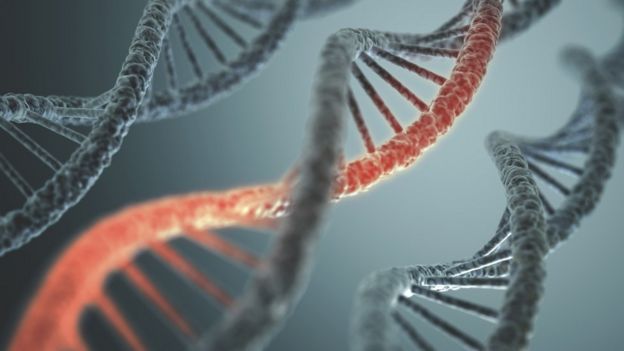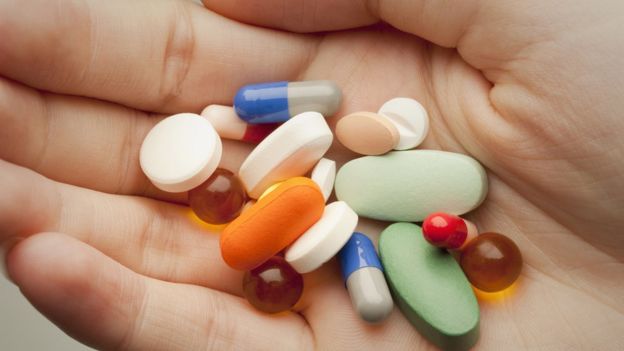Every day, more data about our lives is being generated than ever before. When it comes to saving lives, the bigger the data the better – but what to do with it all?
Ninety per cent of the data in the world has been created in the past two years alone, experts estimate – and the reason for that is technological innovation.
The internet, mobile phones, cameras, sensors, bank cards and social media are just some of the items responsible for the massive volume of “big data” that is currently amassed every single second.
As technology has advanced, so too have the opportunities for scientists.
Sequencing a human genome – all three billion letters of it, which denotes an individual’s unique DNA sequence – used to take years to achieve. Now it takes less than a week.
The information this provides is improving scientists’ understanding of the genetic basis of many human diseases.
And large-scale projects such as the 100,000 Genomes Project are starting togive some families a diagnosis for their children’s mystery conditions.
 Image copyrightThinkstock
Image copyrightThinkstockThe more genomes are analysed, the greater the hope of new and more effective treatments for rare diseases.
Genomes are just one element of the move to capture more and more ‘big data’ in medicine and healthcare.
Very valuable resource
Take the humble patient record held by GPs.
There are around 60 million of them in the UK.
When combined with hospital data on everything from why people are admitted, to their scans, X-rays and pathology results, electronic patient records are a very valuable resource.
Prof Harry Hemingway, professor of clinical epidemiology and director of the Farr Institute of Health Informatics Research, is harnessing that data for the benefit of patients and the public.
Put simply, he wants to improve people’s health and the quality of their healthcare by analysing all kinds of anonymised information.
By linking up data from primary and secondary care, for example, he says it is possible to “identify the crucial time course of disease”.

In the UK, too many cancers are diagnosed at a late stage when the disease is often advanced and untreatable.
But if those patients have been to their GP with symptoms which have not been picked up, then that information can be used to diagnose other patients earlier.
It is a similar story with cardiovascular disease – one of the world’s major killers – and ovarian cancer, which is notoriously difficult to spot.
“We can use data and computers to look at all the symptoms and identify markers of these diseases,” Prof Hemingway says.
“We have a powerful set of opportunities to make advances across the whole of health and biomedicine.”
Making sense
Prof Hemingway’s concern is that unnecessary harm and death is occurring too often in the UK because data has not been analysed.
“We expect data to be optimised in all other aspects of life – so why not in healthcare? You can’t have a programme to improve the effectiveness of medicines without data.”
So, ‘big data’ has the power to answer lots of questions – but is it always clear what to ask?
 Image copyrightThinkstock
Image copyrightThinkstockProf Martin Landray, professor of medicine and epidemiology at the University of Oxford, says the challenge is “how to make sense of it”.
He is helping to analyse data from the UK Biobank, a project which started in 2006 and which has recruited half a million people aged 40 to 69 from across the country.
They have all provided blood, urine and saliva samples for future analysis, and given detailed information about their bodies, diets and lifestyles – and everyone will be followed up regularly until the day they die.
Recently, large groups of the participants have undergone cognitive function tests, others have gone through genotyping – determining differences in a person’s genetic make-up – and yet more have had images taken of their brains.
The idea is that the data collected will help scientists discover why some people develop particular diseases and others do not.
But that is not an easy task.
Prof Landray says: “You can’t just sit a radiologist down in front of thousands of MRI scans to analyse. You have to simplify it down and then make it accessible for researchers to look at.”
Sometimes it is possible to compare like with like, but more often the data has holes in it and is much more messy.
Quick questions
As part of the soon-to-be-opened Big Data Institute in Oxford, more than 500 scientists will take up the challenge of handling the Biobank data and analysing it.
Before, researchers were full of questions they wanted to ask about human health – but had to wait years to find out the answers.
“They now have the opportunity to ask those questions in rapid time,” Prof Landray says.
And big is definitely beautiful when it comes to this kind of data.
Research based on small numbers of patients contains too many errors, particularly when it comes to analysing the risk factors for diseases.
“We crave information about large numbers of people over long periods,” he says. “That way, you get rid of the play of chance.”
Around the world the race is on to use data to save lives.
In the US, President Obama recently launched a Precision Medicine Initiative which plans to gather “big data” to develop more individualised care.
In China, a study of 500,000 people is doing something similar which means it will be possible to compare and contrast the health of entire populations in the not too distant future.
“Big data” should keep health experts busy for a long time to come.
Copy: http://www.bbc.com/news/health-35491177